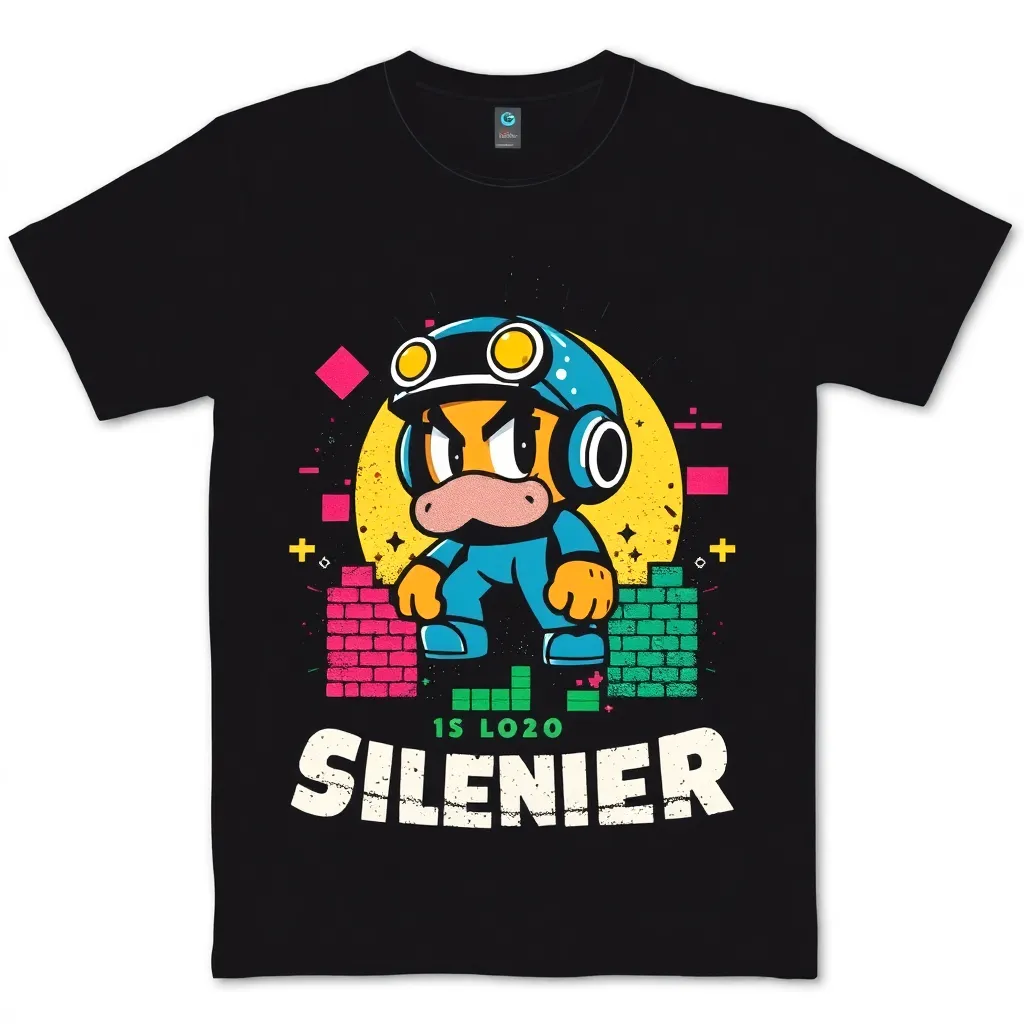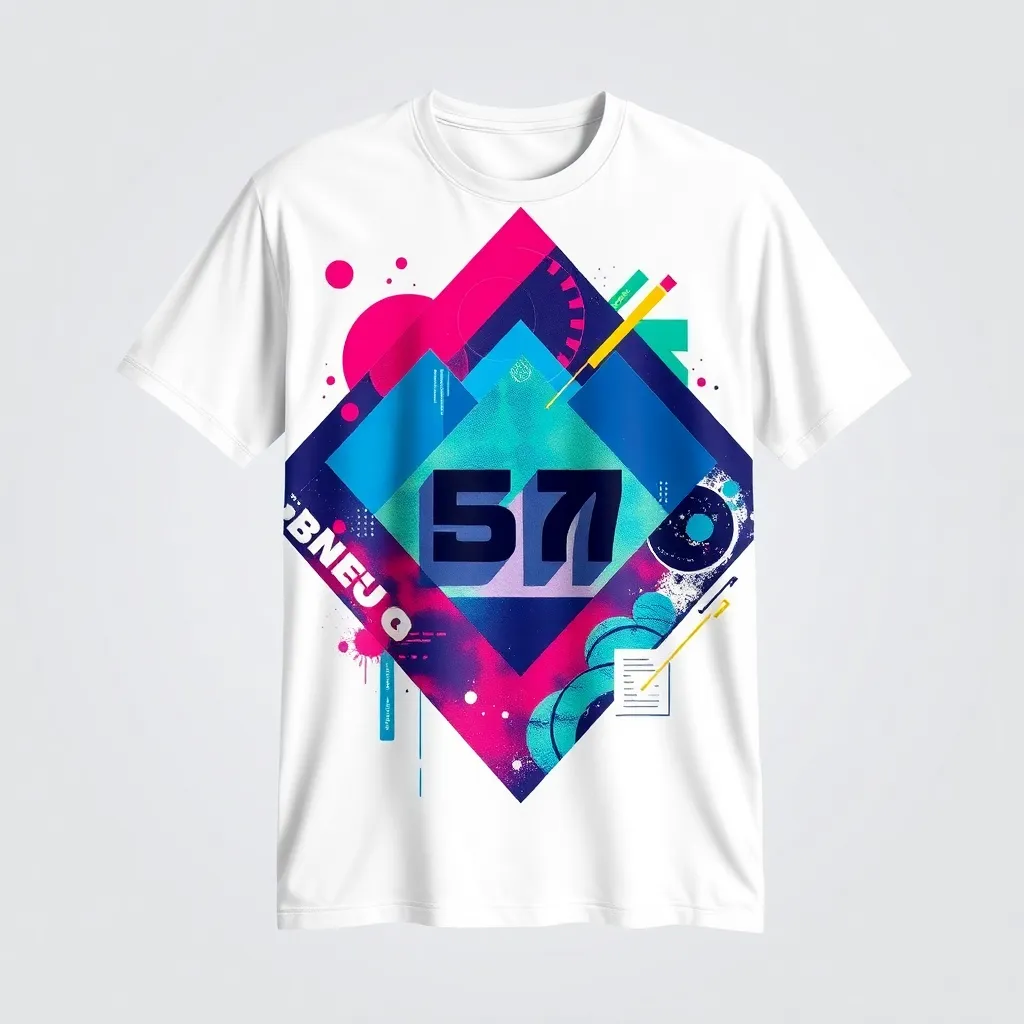From Basics to Statement Pieces: The Rise of Graphic T-Shirts
From their early days as basic promotional items to their current status as fashion must-haves, graphic t-shirts have undergone a significant transformation. What was once a simple way for companies to advertise their brand has evolved into a means of self-expression, allowing wearers to convey their individuality and showcase their passions.
The rise of graphic t-shirts can be attributed to the growing demand for personalized and unique fashion items. As people become more conscious of their personal style, they’re seeking out clothing that reflects their personality, interests, and values. Graphic t-shirts offer a way to do just that, with designs ranging from humorous memes to bold statements on social issues.
The proliferation of social media has also played a significant role in the popularity of graphic t-shirts. Platforms like Instagram and TikTok have created a culture of visual expression, where users can share their personal style and connect with like-minded individuals. Graphic t-shirts have become a staple in this online fashion landscape, allowing wearers to showcase their creativity and individuality to a global audience.
The Early Days: Simple Logos and Basic Designs
During the 1950s and 1960s, graphic t-shirts were mainly utilized as promotional tools for various organizations, music bands, and events. The primary purpose of these tees was to advertise and create brand awareness, rather than being a fashion statement.
The designs on these early graphic tees were relatively simple, often featuring a single-color logo or text-based graphics. This minimalist approach was a reflection of the limited printing technology available at the time, which restricted the complexity and vibrancy of the designs.
Despite their simplicity, these early graphic tees played a significant role in popular culture. They helped to promote iconic brands, bands, and events, creating a sense of community and belonging among those who wore them. According to the Smithsonian National Museum of American History, graphic t-shirts have become an integral part of American cultural history.

The 1980s: A Decade of Self-Expression
The 1980s were a pivotal time for graphic t-shirts, as they transitioned from being a novelty item to a staple of self-expression. The punk rock, new wave, and hip-hop movements, which emerged during this decade, played a significant role in popularizing graphic tees as a means of showcasing one’s individuality and interests.
This era saw a proliferation of cartoon characters, video games, and comic book heroes on t-shirts, catering to the nostalgia and pop culture obsessions of the youth. The likes of Mickey Mouse, Pac-Man, and Superman became ubiquitous on graphic tees, allowing wearers to proudly display their fandom.
The rise of graphic t-shirts in the 1980s was also fueled by advancements in printing technology, which made it possible to produce high-quality, photo-realistic designs on a large scale. This led to a surge in the availability of graphic tees, making them more accessible to the masses.
The 1990s and 2000s: Irony and Retro Appeal
The 1990s and 2000s saw a significant resurgence in the popularity of graphic t-shirts, largely driven by the irony and nostalgia associated with retro designs. This trend was characterized by a fascination with vintage aesthetics, as well as a desire to poke fun at the seriousness of mainstream fashion.
During this period, brands like Abercrombie & Fitch and American Apparel capitalized on the trend by producing graphic tees with humorous slogans, distressed prints, and vintage-inspired graphics. These designs often featured witty one-liners, cartoon characters, and retro logos, which appealed to consumers looking for a more laid-back, casual approach to fashion.
The irony and nostalgia behind graphic tees also played a significant role in their popularity. Consumers were drawn to the retro aesthetic as a way to reconnect with their past and express a sense of humor about the present. This trend was further fueled by the rise of internet culture and social media, which allowed people to share and discover new graphic tees with ease.

Today’s Graphic Tees: Statement Pieces and Fashion Must-Haves
Indeed, modern graphic t-shirts have evolved into a powerful means of self-expression, allowing individuals to showcase their unique style and personality. The improved printing technology has opened up a world of possibilities, enabling designers to create intricate, vibrant, and bold designs that were previously unimaginable.
The versatility of graphic t-shirts is evident in the wide range of styles available, catering to diverse tastes and preferences. From subtle, minimalist illustrations to elaborate, eye-catching graphics, there’s a design to suit every individual’s aesthetic. This diversity has contributed significantly to the popularity of graphic t-shirts, making them a staple in many people’s wardrobes.
Moreover, graphic t-shirts have become a popular medium for artists and designers to showcase their creativity. With the ability to produce high-quality, detailed designs, graphic t-shirts have become a canvas for artistic expression. As a result, many graphic t-shirt brands have emerged, offering unique and exclusive designs that appeal to fashion enthusiasts and art lovers alike.

Conclusion: The Enduring Appeal of Graphic T-Shirts
The evolution of graphic t-shirts has been remarkable, transforming from a niche trend to a mainstream fashion essential. What was once considered a casual, laid-back attire has now become a versatile piece that can be dressed up or down, making it a wardrobe staple for many.
One of the primary reasons graphic tees have gained immense popularity is their ability to convey personality and individuality. A well-designed graphic tee can instantly reveal one’s interests, hobbies, or passions, making it an excellent conversation starter. Moreover, with the rise of social media, graphic tees have become a means to showcase one’s personality and style online, allowing individuals to express themselves beyond words.
The diversity of graphic tees is another significant factor contributing to their widespread appeal. From vintage-inspired designs to bold, futuristic graphics, there’s a style to suit every taste and preference. According to a report by Statista, the global apparel market size is projected to reach 1.5 trillion U.S. dollars by 2025, with graphic tees being a significant contributor to this growth.
With the advancement of digital printing technology, the production of high-quality graphic tees has become more accessible and affordable. This has led to an influx of independent designers and brands offering unique, limited-edition designs that cater to specific niches and interests. As a result, consumers have an unprecedented range of options to choose from, making graphic tees an integral part of modern fashion.

